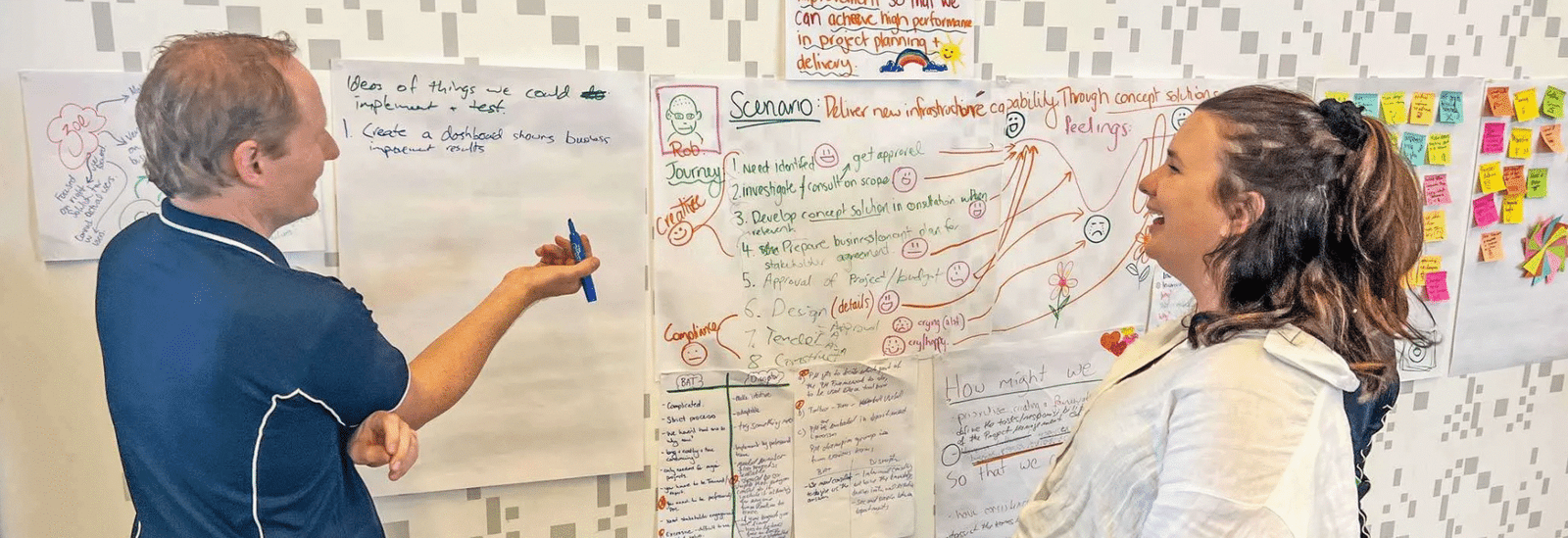
In today’s complex world, finding creative solutions to challenges is more important than ever. One powerful approach that many forward-thinking teams use is the Design Thinking Workshop, a collaborative method for solving problems with creativity, empathy, and innovation.
What Is a Design Thinking Workshop All About?
A Design Thinking Workshop brings people together in a hands-on, interactive session designed to spark ideas, explore challenges, and develop meaningful solutions. It’s more than just brainstorming—it’s a structured approach that blends creativity with problem-solving, encouraging teams to focus on real human needs.
This workshop format encourages participants to step away from rigid processes and dive into a mindset of discovery, testing, and improvement. It’s suitable for businesses, educators, non-profits, and government sectors—anyone who wants to innovate effectively and with purpose.
The Core Stages of Design Thinking
Design thinking is built on a five-stage process that guides participants through understanding, creating, and testing ideas. A typical workshop includes:
1. Empathize with the User
The first step is about putting yourself in someone else’s shoes. This stage helps teams understand the emotions, needs, and motivations of the people they’re designing for. Through interviews, observations, or interactive activities, participants gain fresh insights into user behavior.
2. Define the Problem Clearly
Once the team understands user needs, the next step is to define the core problem. This isn’t just about identifying a surface-level issue—it’s about reframing it into a human-centered challenge that opens the door to innovative thinking.
3. Generate Ideas (Ideate)
In this creative phase, all ideas are welcome—no matter how wild they may seem. The goal is to think outside the box and come up with as many potential solutions as possible. The best concepts are then selected for further exploration.
4. Build Prototypes
Now it’s time to bring ideas to life. Prototypes can be simple sketches, storyboards, or physical mock-ups. These early models help teams visualize how their ideas might work in real life and give them something tangible to test.
5. Test and Learn
Prototypes are tested with users to gather feedback and discover what works and what doesn’t. This feedback helps improve the solution, ensuring that the final result truly meets user needs and expectations.
Why Teams Benefit from a Design Thinking Workshop
A Design Thinking Workshop does more than teach skills—it creates an experience that transforms how people think and collaborate. Here are some key benefits:
Boosts Team Creativity
The workshop environment encourages experimentation and out-of-the-box thinking, even from people who don’t usually see themselves as “creative.” It’s a safe space to try new things and think differently.
Encourages Empathy and Human Focus
By starting with empathy, teams learn to focus on real people instead of just numbers or technical details. This leads to solutions that are not only useful but also meaningful and impactful.
Breaks Down Communication Barriers
Workshops bring together people from different departments, backgrounds, and roles. This diversity leads to richer ideas and helps teams understand each other better.
Provides Actionable Results
At the end of a Design Thinking Workshop, teams walk away with more than ideas—they leave with prototypes, a clear direction, and the confidence to move forward.
Flexible Formats for Any Setting
Whether your team is working in an office, remotely, or across different time zones, Design Thinking Workshops can be adapted to fit. In-person workshops offer energy and connection, while virtual or hybrid sessions allow participation from anywhere in the world.
Sessions can be customized in length and depth, ranging from quick energizers to full-day innovation labs. This makes them ideal for any organization, no matter its size or industry.
Applicable Across Industries
From rethinking customer experiences to redesigning internal processes, these workshops are valuable across all sectors. They’re especially effective during times of change, helping teams adapt quickly and find clarity in uncertainty.
Whether you’re in healthcare, education, business, or government, design thinking encourages innovation in a practical, people-centered way.
Long-Lasting Impact
What makes a Design Thinking Workshop so powerful is not just what happens during the session—but the ripple effects afterward. Teams develop a new mindset: one that is open to feedback, curious about others, and eager to experiment.
The process doesn’t end when the workshop ends. Participants carry their new tools and perspectives back to their daily work, creating ongoing value and inspiring others.
Conclusion
If your organization is ready to think differently, solve problems creatively, and design solutions that make a real impact, a Design Thinking Workshop is the ideal place to start. With a focus on human-centered innovation and practical action, it’s a game-changer for modern teams. For expert guidance and facilitation, Simon Banks offers workshops that bring this process to life in powerful and engaging ways.

